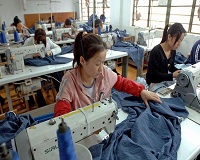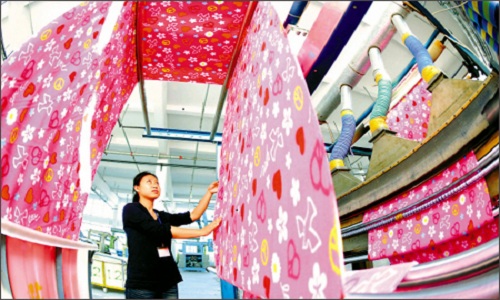
With China according priority to the textile sector in the late 1970s, there’s no looking back and the country has been sustaining pole position as the top global exporter. Even as India is trying hard to catch up, however, the efforts seem to be futile. For example, between 2001 and 2015, India’s textile and apparel exports nearly quadrupled from $10.7 billion to $41 billion. It actually doubled to $20 billion in 2005 from 2001 and then took another 10 years to touch $40 billion. During this time, China’s textile and apparel exports rose from $50 billion to nearly $200 billion. In the global market, China enjoys a 40 per cent market share and India is a distant second with a meagre 5 per cent share.
Factors that helped China

Indian textile industry has had to deal with numerous problems. These are the result of faulty governmentpolicies. On the contrary, China made its place even stronger with business-friendly policies. In 1979. China began its open-door policy and kick-started economic reforms. It started restructuring its textiles industry. With over 100 years’ experience in textiles, China had basic infrastructure for the industry in place. It just needed a sharp focus, which began by raising capacities in each segment of the sector. The textiles industry is a labour-intensive one, and China took advantage of its low-cost human resources, what with a huge population looking for a source of income. China came up with six priorities to promote the textile industry – giving it a favourable treatment from supply of raw materials, to power, modernisation, bank loans, foreign exchange, and import of advanced technology.
From around 18 million spindles in the 1980s, China’s capacity in spinning mills went up 120 million spindles by 2015, or 48 per cent of the total capacity in the world while India has 51 million spindles, making up 20 per cent of the world capacity. China primarily targeted production for the export market. It took advantage of a bilateral pact that it had signed with the United States (US) in 1980. This helped China export nearly 50 per cent of its total domestic production at one point of time in the 2000s. The initiatives also gave China the advantages that a first-mover usually gets in any industry. Next was automation and modernisation that China quickly lapped up.
India, a stark contrast
Today, while it’s not just China, the country needs to fight for its position with Bangladesh and Vietnam as well. One of the major deterrents was Indian infrastructure, which is followed by a shortage of raw material. In 1994, spinning mills bled after the cotton crop failed and traders hoarded cotton. Third bigger issue was hank yarn obligation. Since India has three million handlooms, the government has always been of the view that the sector should get a continuous yarn supply. Therefore, it is mandatory for a textile mill to ensure that 40 per cent of its production is in hank form.
FICCI data points out successive governments have come up with various schemes to help the textile industry move forward. Currently, at least 10 schemes are active, but they don’t seem to be working for the sector’s advantage. Another major worry is the unorganised structure of the industry. In fabric manufacturing and processing, these units use secondhand machinery that is imported. Shuttle-less looms help weave fine fabrics make up only two lakh of the nearly two million looms in the country, which reflects inefficiencies. Dismantled looms in China find their way into India and it is no surprise that Chinese machines make up nearly one-third of textile machinery imports into India. According to FICCI, other issues include higher capital costs, absence of fibre neutrality, poor technology, and a lack of access to credit.
Another issue plaguing the industry is the absence of free-trade agreements with major markets like Europe. While lesser developed countries such as Bangladesh can export to Europe at zero duty, others like Pakistan enjoy an advantage under a general system of preference plus system. Indian imports to Europe attract 9.6 per cent duty.
To lead from the front, the country needs to first increase productivity and efficiency. That can be achieved only if it encourages the setting up of more integrated textile units. While skilled manpower is the need of the hour for the sector, a technology upgrade should be given priority. India, too, has set up a technology mission under its ‘Make In India’ programme. Time can only tell how far it can take the textile industry in harnessing promising prospects.












